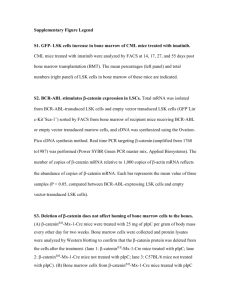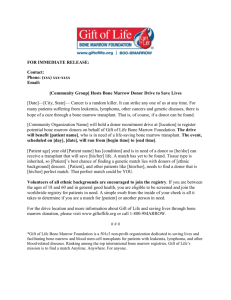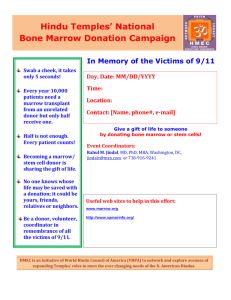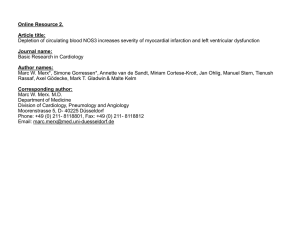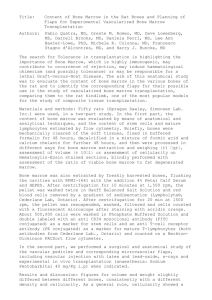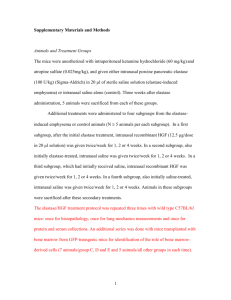Table S1.
advertisement
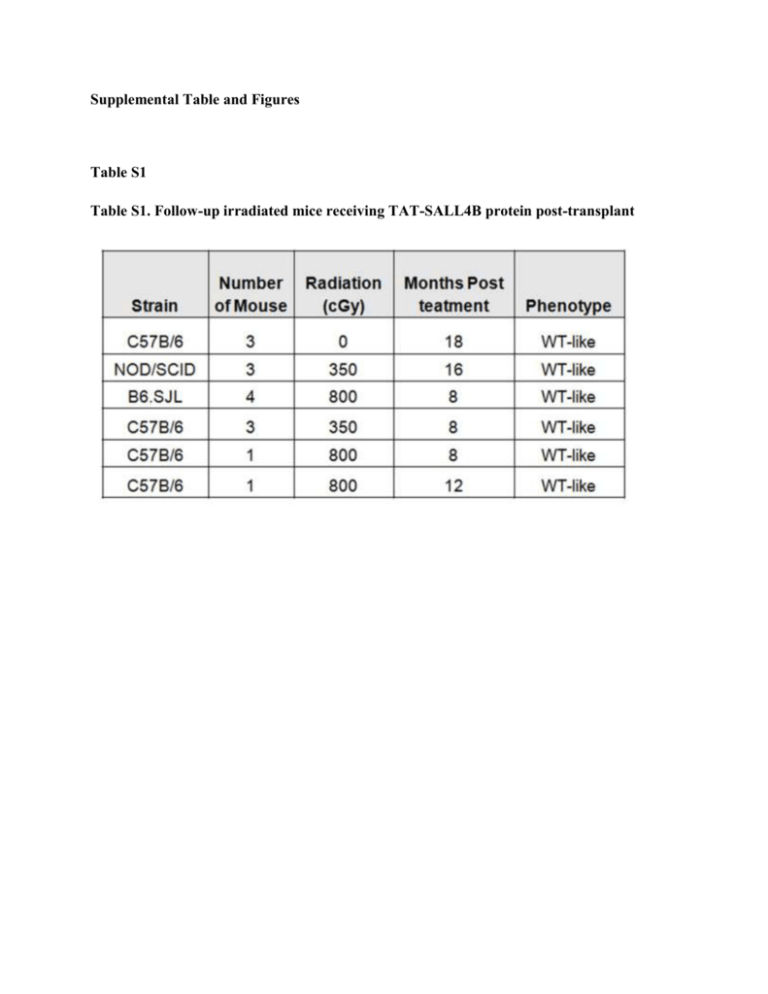
Supplemental Table and Figures Table S1 Table S1. Follow-up irradiated mice receiving TAT-SALL4B protein post-transplant Figure S1. Figure S1. Uptake of TAT-SALL4B protein by bone marrow cells. Existence of TATSALL4B in bone marrow cells of mice receiving intraperitoneal injection of TAT-SALL4B as shown by flow cytometry analysis (a) and immunofluorescent staining (b) by anti-6xHis antibody. Figure S2. Cell No. (x105) 3 2.5 2 1.5 1 0.5 0 PBS TAT-GFP Figure S2. TAT has no effect on bone marrow regeneration. The number of total bone marrow cells in TAT-GFP treated mice is not different from PBS control (n=3). Figure S3. Figure S3. TAT-SALL4B does not significantly increase the human cells ratio in short-term engraftment. Sub-lethally irradiated NOD/SCID received 40,000 human CB CD34+ cell and were injected with TAT-SALL4B protein or PBS for 7 days. The percentage of human CD45+ cells in mice bone marrow in SALL4B group is higher but not statistically significant than PBS control at 14 days after transplantation. Figure S4 CD45.1 Cell No. (x103) 3 2.5 2 1.5 1 0.5 0 PBS SALL4B Figure S4. TAT-SALL4B has no effect on donor cell homing in transplantation. The absolute numbers of donor CD45.1 cells in recipient CD45.2 mouse bone marrow are not different between SALL4B and PBS group 24 hours after transplantation (n=3).


